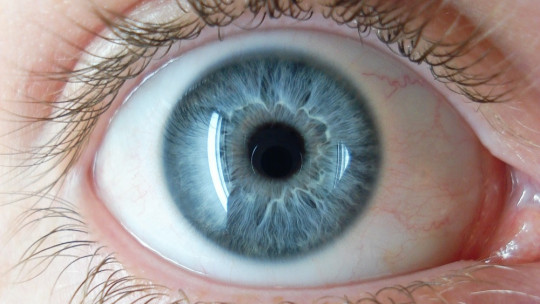![]()
It is said that the eyes are the window to the soul, but they also allow us to know the way we pay attention to the details of a painting, the parts of our body that we look at most when we are in front of the mirror or what catches our attention. of an advertisement.
Eye Tracking is a process in which eye movements are measured in order to determine where, what and for how long a person is looking.
The eyes are, perhaps, the most important organs through which we obtain information about the world and, for this reason, eye tracking techniques have become very important in research. Let’s take a closer look at these techniques.
What is Eye Tracking?
“Eye Tracking”, also known as eye tracking, refers to the set of techniques that allow us to evaluate where a person is looking, What specific object or detail do you focus on and how long do you keep your gaze fixed?. The devices that carry out this technique are called “eye trackers”, and are made up of multiple different types of devices that allow you to focus on the angle of gaze or the movement of the eye itself.
Eye tracking techniques They have been used in research in different fields, such as cognitive linguistics, psychology, and also marketing and product design. They are techniques that allow us to know the visual behavior of a person, whether the subject, patient or buyer, and based on this, establish conclusions about their interests, their emotional state or even if they have some type of pathology.
History
Although today eye tracking techniques use modern devices that allow the movement of the eyes or the direction of the gaze to be recorded, the truth is that the first attempts to know where people were looking when doing a certain type of task They date back to the 19th century. These first attempts were made by direct observation of where the subject was looking, and what type of information or striking stimulus had been presented to him in his visual field.
Louis Emile Javal, in 1879 it was observed that, when reading, the reading process did not involve a gentle sweep of the eyes across the text. Until then, it was believed that, when reading, for example, a book, you followed each line from beginning to end, without jumping or getting “stuck” for a few seconds on the same word. Javal observed that reading was actually a series of short stops, fixations, and rapid saccades.
During the 20th century, attempts were made to resolve several questions about reading, such as which words they spent the most time on, how much time they spent on them, or how and why they went back and reread words they had already read. Edmund Huey, with the intention of solving these questions, designed a contact lens with a hole that was placed directly into the participant’s eyes. With these lenses he could register, very precisely, the movement of the eyes when reading, and what was being looked at.
Given the Huey’s technique was, despite being objective and effective, quite annoying and invasive, other researchers invented their own “eye trackers”, which were limited to precisely recording eye movement without the need to introduce anything into the participant’s eye. One of them, Guy Thomas Buswell, was the one who devised the first non-invasive eye tracking device, using beams of light reflected in the eye and, when the eyeball moved, the light ray was deflected, recording the process on film. .
During the 1950s and 1960s, it would be discovered that eye movement, both in front of a text and an image, could be conditioned by the task that the participant had to perform, or their interests. This was the case of the research of Alfred L. Yarbus, who came to the conclusion that eye movement did not depend only on what was in front of the subject, but was also influenced by what he expected to find.
Today, eye tracking devices have been improved and have become much more accurate and less invasive. They have been adapted not only to understand the visual behavior of people in front of a painting, a page of text or a face, knowing what people pay more attention to. Since the 2000s Eye tracking devices have been manufactured for people with motor disabilities which interpret eye movements as commands, causing, for example, the wheelchair to move or a phrase to be uttered by looking at the words on a screen.
Types of eye trackers
Although most eye trackers today are non-invasive and use video recording, they are not the only ones nor are they, strictly speaking, the most accurate. Below we will see the three main types of eye tracking.
1. Invasive sensation
Something that is attached to the eye is used, such as a contact lens with a built-in mirror. This type of eye tracking is quite invasive, as its name indicates, since it involves placing something in the subject’s eye that moves according to how the eyeball moves.
Since the eyes are delicate organs and, as a general rule, people are very sensitive to being touched, There are many times in which the participant rejects having an invasive sensing eye tracker placed on them. It’s a pretty annoying technique.
But despite being annoying, eye trackers of this type have the advantage that they allow the movement of the eye to be recorded quite accurately, since they move according to how the eye moves. The recordings obtained through this system are very detailed.
2. Non-invasive sensing
This monitoring is done without the need to make direct contact with the eye. Through light, such as infrared, eye movement is known through the reflection of the light beam, which is captured by a video camera or an optical sensor.
Non-invasive sensing eye trackers They usually use the corneal reflex and the center of the pupil to know the movement of the eyeball. Others also use the front of the cornea and the back of the lens. There are also those that record the inside of the eye, looking at the position of the blood vessels in the retina.
In general, optical methods are well considered in the field of research, since their cost is low and they are non-invasive.
However, they may fail to record eye movement, since sometimes they do not accurately detect the pupil, cornea, or whatever ocular cues they use to do eye tracking. Furthermore, if the subject closes his eyes, his visual behavior cannot be recorded.
Some virtual reality devices, such as FOVE glasses, have eye trackers of this type, allowing us to know where the person is looking once immersed in the virtual environment.
3. Electrical potentials
A rather special eye tracking technique is the one that uses electrical potentials, measured with electrodes placed around the eyes.
The eyes are the origin of an electric potential field, which can be measured even with the eyes closed. The electrodes can be placed in such a way that a dipole is generated, a positive pole on the cornea and a negative pole on the retina.
The electrical signal obtained from this technique is called an electrooculogram (EOG). If the eyes move from the center to the periphery, the retina moves closer to one of the electrodes, while the cornea moves closer to the opposite one.
The main advantage of eye tracking using electrical potentials is that It is capable of recording eye movement even with closed eyelids since the magnetic field of the eye is being recorded.
However, its main disadvantage is that, although it is not completely invasive, it involves having to place electrodes, something that involves having to scratch the subject’s skin a little. Additionally, the care of these electrodes is quite delicate, and they can fail very easily or not conduct current well depending on the subject’s skin.
Eye Tracking Applications
Eye tracking has proven to be quite useful for several fields, both theoretical and practical.
Marketing and web design
In marketing, eye tracking is a useful technique since it allows us to know the visual patterns of buyers knowing which details in an advertisement, whether on television, in newspapers or on the web, they pay more attention to.
Thanks to this, companies can carry out quantitative studies of how communication, that is, their advertisements, are perceived by the population, and how to improve it. Also It is possible to know the impact of audiovisual advertising, both in a neutral, that is, experimental, context and in life itself.
By knowing what details users pay more attention to, it is possible to improve company websites to make them more attractive and manageable for potential buyers, in addition to maintaining their attention and directing them towards purchasing the product or service.
But Not only does eye tracking focus on how to advertise products, but also in how they should be packaged. With eye tracking you can see which stimuli of a certain color, shape or various visual characteristics the subject pays the most attention to. In this way, companies can design their products and their packaging to induce purchase.
People with disabilities
Eye tracking has the great advantage of being able to help people with reduced mobility, such as people with tetraplegia or cerebral palsy.
Eye tracking through non-invasive sensing can be combined with computer screens, in which letters appear that the user can look at. By fixing its gaze on those letters, a device forms words and phrases that sound through a speaker, allowing people with speech problems to communicate.
Also You can do this same thing to get the wheelchair to move. The person fixes his gaze on the screen, on which arrows appear indicating the direction. Fixing your gaze on each of these arrows, you send the order to the mechanized wheelchair to move in the desired direction.
Psychology
By studying visual behavior it is possible to know if a person manifests some type of pathology, or in what way their way of looking at things differs from that expected in a person without a psychopathological diagnosis.
It has been observed that People with attention deficit hyperactivity disorder look away much more easily than people without the diagnosis.
This means that they do not pay due attention to elements such as the class blackboard or the textbook, promoting learning and understanding problems that can be confused, in the most serious cases, with dyslexia or even mental retardation.
It should be said that eye tracking techniques can be very useful to diagnose both ADHD and dyslexia because, although reading problems occur in both, the pattern of visual behavior differs, with the former having more decentering of the gaze while the In the second there are more fixations in the text, but not very efficient.
Eye tracking has also been used to observe and analyze the visual behavior of people who suffer from neurodegenerative diseases such as Alzheimer’s or Parkinson’s, and mental disorders such as schizophrenia, autism spectrum disorders, depression or brain injuries.
Its usefulness in eating disorders is of special mention. Using these devices, combined or not with virtual reality, it is possible to know where people diagnosed with anorexia nervosa look most. It is expected that they will focus their gaze especially on those places where they feel the most complex.








